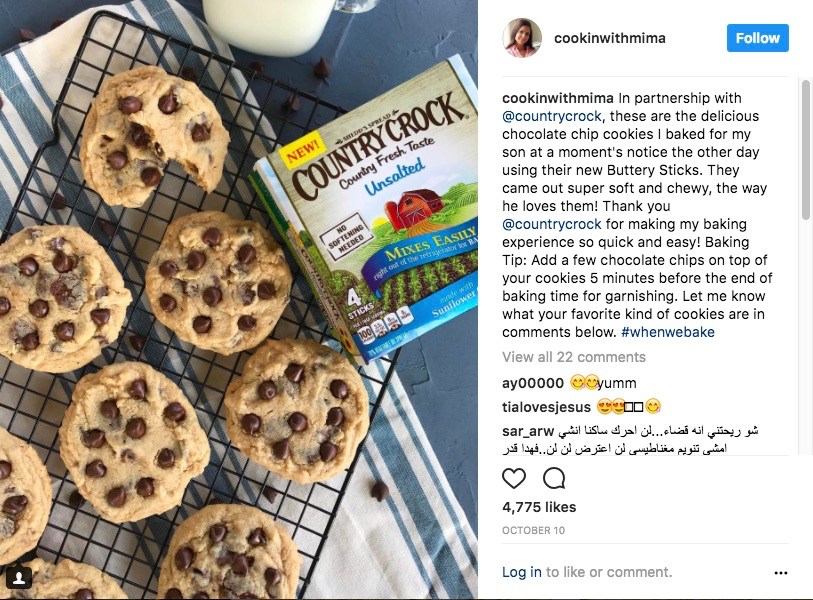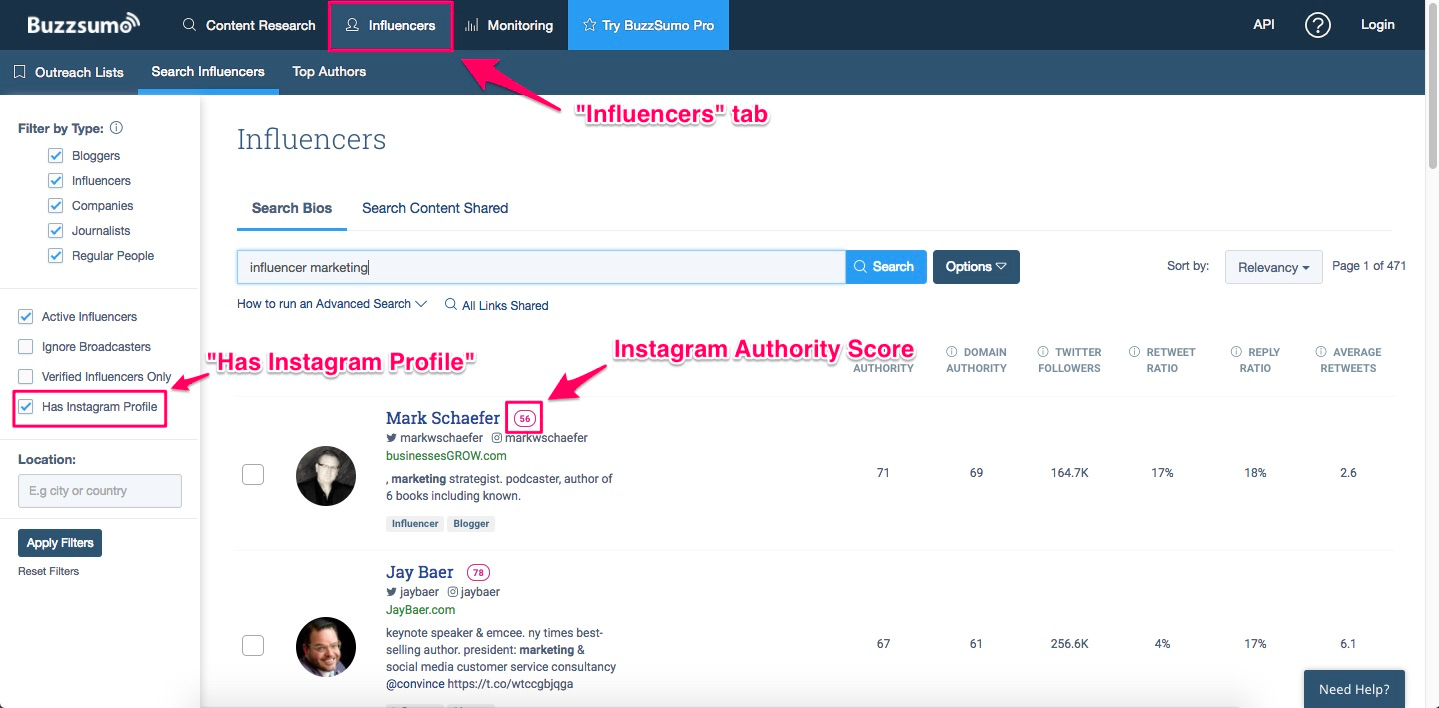The Beginner’s Guide to Instagram Influencer Marketing
If you weren’t already aware, Instagram is a big deal. With 800 million users, Instagram represents an opportunity for brands to connect with prospective buyers like never before. The sheer diversity of content creators on Instagram means that no matter what you sell, there’s someone you can partner with. With the rise of micro-influencers (Instagram accounts with less than 10,000 followers), influencer marketing doesn’t have to be expensive to be effective.
In this post, we’re going to teach you everything you need to know to get started with Instagram influencer marketing. We’ll cover how to find influencers, how to approach them, and how to run a financially viable influencer marketing campaign.
Let's get started!
What is Instagram Influencer Marketing?
Instagram influencer marketing is the social media manifestation of the most ancient form of promotion: word of mouth marketing. Someone tries a product or service, likes it, and then recommends it to their friends.
Except with Instagram, your "friends" can be 10’s or 100’s of thousands of people who can see your recommendations without having to leave the comfort of their phones. And the person recommending the product received payment, a free sample, or another incentive to give the recommendation (more on this in a moment).
You might think that a paid promotion would make Instagram followers skeptical of recommendations. But as long as the product promoted is in line with the influencer’s style and values, followers don’t care. In fact, they’re happy to get recommendations from people they trust. It’s social proof 101.
Sounds simple, right? In principle, it is. The details, however, can get more complicated, and that’s what we’re going to cover in the rest of the post.
How to Find and Choose Influencers (or, How to Avoid Getting Scammed)
Deciding you want to run an Instagram influencer marketing campaign is easy. Finding quality influencers to promote your products, however, is trickier. The main reason is that the most common metric of Instagram success (followers) is easy to inflate. If you don’t believe this, have a look at the results for the Google search "buy instagram followers".

And even beyond outright buying followers, it’s also easy to use bots or other software tools to follow large numbers of people at once in the hopes of getting a follow back (the Instagram term for this is "follow for follow"). You can now see why follower count is a poor metric for determining an Instagrammer’s influence.
What should you use instead? Don’t look at followers--look at engagement. That is, how many people are liking, reposting, and commenting on a person’s post. In particular, you should look at previous sponsored posts. These will show you what level of engagement you can expect for your own promotions, and it also shows you what sort of products the influencer tends to promote.
Which brings us to an important point: while followers and engagement do matter, the most important thing to consider when choosing influencers is how well their personal brand matches your product. It doesn't matter how creative your campaign is if you don't partner with the right influencers. This is hard to measure objectively, but it’s easy to get a sense of when you look at an influencer’s posts.
For example, the below partnership between cooking Instagram influencer Mariam Ezzeddine and Country Crock is a logical fit:

Note the large engagement — 22 comments and 4,755 likes.
Of course, wouldn’t it be great if you could skip all this legwork and just see an influencer’s engagement and rates for promoted posts at a glance? Turns out plenty of startups have stepped in to fill this demand. Three of the most popular include NeoReach, Whalar, and Revfluence.
Each tool offers different levels of management and control, but the basic premise of all these platforms is to allow brands and influencers to connect based on industry, demographics, follower count, location, and more. For a comprehensive look at 15 instagram influencer marketing platforms, check out this post from TribeGrowth.
Granted, the above tools don’t come cheap. For an affordable method of discovery, use Buzzsumo’s "Influencers" search tool to find influencers for a given topic. In particular, pay attention to the person’s “Instagram Authority Score” and make sure to check “Has Instagram Profile” in the search options. For example, here’s a search for “influencer marketing”:

How to Reach Out to Influencers
Once you’ve found influencers that you think would fit your brand, you need to reach out to them. Here's an excellent Instagram influencer directory to get you started.
If you’re using an Instagram influencer marketing platform, this functionality is built-in. If you don’t have access to such a tool, however, no worries. You can still conduct effective outreach through Instagram itself.
First, see if the influencer’s bio mentions promotions or has a business email address. If you can find this, it’s the best way to reach out. Keep your email short and direct with a subject line indicating your intent. Popular influencers get bombarded with such communications, so stand out by being direct and clear. That being said, this is Instagram, not LinkedIn--don’t be afraid to use humor, creativity, and a tone that fits the influencer’s brand.
If the influencer doesn’t have a business email address, you can still reach out to them via Direct Message. This is standard practice on Instagram; it’s not weird. The same principles apply here as email outreach, though you must be aware of the 500 character limit.
How to Work With Influencers
Assuming the influencer is interested in working together, you can proceed with the creative process. Always keep in mind that this is a collaborative process--you may be paying the influencer, but they’re not your employee. Their brand integrity matters, since it’s how they gained their influence to begin with. Respect that, and your partnership will be fruitful.
So what do the details of a typical influencer campaign look like? That all depends on the type of campaign, which is the first thing you and the influencer must agree on. Do you want the influencer to promote one of your posts? To use a product in one of their posts? To run a giveaway or contest featuring your brand? Maybe even take over your Instagram account for a day?
These are just a few of the options you have for working with influencers, and they all come with different price tags according to the influencer’s reach and preferences. What you pay an influencer is something the two of you must decide for yourselves, but it’s helpful to have some benchmarks for the cost of a sponsored post to make sure that you’re both getting a fair price. To find these numbers, have a look at Influence.co’s Average Price Per Post for Each Niche.
Once you sort out the type of campaign and agree on payment, you need to make sure you have an efficient workflow for collaborating. You don’t want to waste anyone’s time. To make sure that you get the campaign right with minimal headache, use a tool such as a mood board to give the influencer an idea of your brand’s aesthetic. This will help the two of you determine a visual fit between your brand and theirs.
Also, be sure to over communicate. Once the post is live, you can’t take it back. If you want to use particular hashtags or copy, send that in an email or DM. Indeed, email works best for these sort of communications, so be sure to tell the influencer that you prefer to use it.
Finally, keep in mind the influencer’s experience level with marketing campaigns. If they’re a micro-influencer, they may not have much experience working with brands, or even much business experience. Don’t condescend, but don’t be afraid to explain what you want in detail.
On the other hand, if the influencer is at the internet-famous level, you need to respect that they have their preferred way of doing things and know more about what works and what doesn’t than you do. Don’t compromise your principles, of course, but don’t be afraid to seek advice from a seasoned influencer in shaping the creative direction of the campaign.
Metrics and Tracking and Codes, Oh My
Before we wrap up, we need to cover the analytical side of Instagram influencer campaigns. Like any form of marketing, you must be data-driven to ensure that your ad spend is generating an acceptable ROI. Tracking ROI on influencer marketing efforts can be less straightforward than something like Google Adwords or Facebook ads, but it’s still possible.
The easiest way to track an Instagram influencer marketing campaign is through a tracking link to a landing page. With this, you can use Google Analytics to see the source of the traffic and then calculate the ROI. Because Instagram limits clickable link placement to one per bio, you’ll have to convince the influencer to change their bio during your campaign. Not all influencers will agree to this, and even if they do they’ll set a time limit (and charge accordingly).
A viable alternative to the bio link, then, is to use a custom discount code. This is effective if you’re promoting a product or subscription. Include the code either in the photo or in the text of the post, and configure your payment processor to display sales generated via the code. In Shopify, for example, you can run a "Sales by discount" report to see the number of sales coming from your discount code. Gumroad allows similar functionality.
Finally, note that most Instagram influencer marketing platforms include native analytics solutions, along with the option to integrate with tools such as Google Analytics.
Get Influential
Instagram influencer marketing is a chance to cut through the cynicism and lack of consumer engagement that plagues modern internet advertising. With the pull of an influencer behind you, you can put your brand in front of the right audience. The only limits are your budget and creativity.
Instagram influencer marketing is just one of many ways to use social proof in marketing. For another social proof-driven marketing opportunity, check out FOMO.
